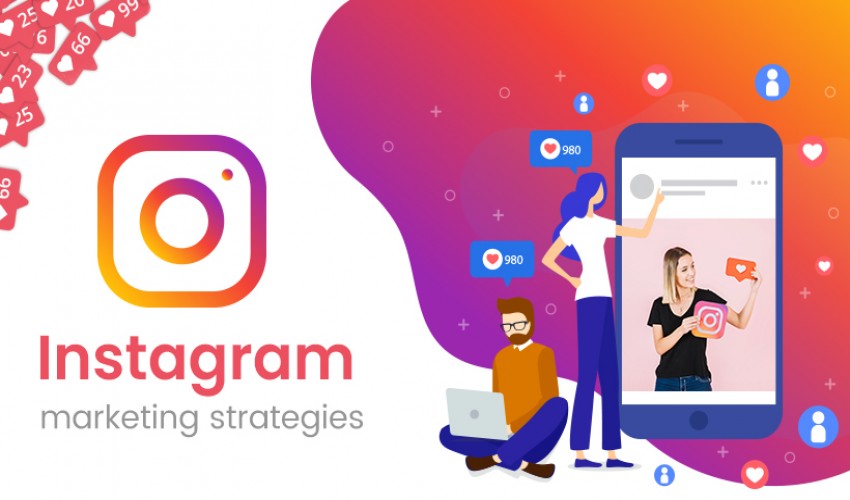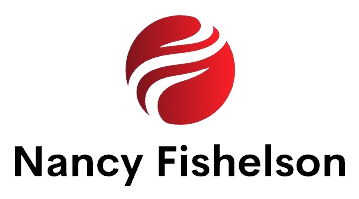Introduction
Instagram Marketing has evolved into one of the most powerful tools in a small business’s digital marketing toolkit. With over 2 billion monthly active users, the platform offers an unmatched opportunity to connect directly with potential customers, showcase products or services, and establish brand identity. For small businesses especially, which often operate with limited resources, Instagram offers a cost-effective and impactful way to market and grow. Understanding how to use the platform effectively is the first step toward leveraging its full potential.
Understanding Instagram’s Role In Small Business Growth
Instagram Marketing is fundamentally a visual platform, and this visual nature aligns perfectly with how people consume content today. In a world increasingly driven by quick, engaging visuals and short-form video, Instagram allows small businesses to present themselves in a visually compelling way. Whether it’s through image posts, Stories, Reels, or Live videos, the app gives brands a dynamic canvas to connect with their audience in real time. More than just visuals, the platform’s interactive features, such as polls, Q&A stickers, direct messaging, and comment threads, help businesses build authentic relationships. These elements play a crucial role in developing customer trust and loyalty—two key factors in small business success.

Crafting A Compelling Instagram Profile
The first step in Instagram marketing is to create a business profile that clearly communicates your brand’s message. A well-optimized bio, a recognizable profile picture (often a logo), and a clickable link in bio are essential. For small businesses, the bio should quickly tell a visitor who you are, what you offer, and how they can reach or shop with you. Instagram offers tools like contact buttons and action links which should be used to their fullest to direct followers to shop, book, or contact.
Creating A Consistent Brand Aesthetic
Instagram Marketing: One of the most overlooked but important aspects of Instagram marketing for small businesses is maintaining a consistent visual aesthetic. This involves using specific color palettes, filters, or visual styles in all your posts to create a cohesive look and feel. A consistent aesthetic builds brand recognition and helps establish a strong visual identity. Users scrolling through their feed should be able to recognize your content instantly. This consistency should also extend to your tone of voice in captions, your type of content, and your posting schedule.
Strategizing Content For Engagement And Reach
Content is at the heart of Instagram marketing. For small businesses, developing a content strategy that aligns with business goals is essential. This includes a mix of promotional content, educational posts, behind-the-scenes looks, customer testimonials, product demos, and community spotlights. By mixing content types, you ensure your feed remains engaging and not overly sales-driven. It’s important to understand what type of content your audience wants and when they are most active. Analytics tools built into Instagram provide valuable insights on this front. Posting at optimal times and in the format your audience prefers (e.g., Reels over static images) can significantly improve reach and engagement.
The Power Of Reels And Short-Form Video
Instagram Marketing: Instagram Reels have emerged as one of the most powerful formats on the platform. With Instagram prioritizing Reels in its algorithm, small businesses that make use of this feature can reach a broader audience—even users who don’t follow them yet. Reels offer the chance to be creative, humorous, educational, or all three at once. For instance, small retailers can use Reels to showcase new arrivals, while service providers might use them to highlight processes or results. Short-form video content resonates with audiences and offers much higher engagement rates, making it a must-use feature for small businesses.
Leveraging Stories For Daily Engagement
Instagram Marketing: Instagram Stories are perfect for real-time engagement. They disappear after 24 hours, making them ideal for flash promotions, announcements, polls, and behind-the-scenes content. Small businesses can use Stories to create a more personal connection with their audience. Stories can also be saved as Highlights, allowing businesses to organize key content—like testimonials, pricing, FAQs, and product categories—for easy access. With features like “swipe-up” links for accounts with enough followers or the newer link sticker available to everyone, Stories also provide traffic-driving potential.
Using Instagram Live To Build Real-Time Relationships
Instagram Marketing: Live video is one of the most authentic ways to connect with your audience. Instagram Live allows small business owners to interact with followers in real time, answer questions, and demonstrate products or services. Live sessions are also favored by Instagram’s algorithm, offering greater visibility. Hosting Q&A sessions, product launches, tutorials, or simply connecting with your audience over shared interests can build a more loyal community. Businesses can promote their Live sessions in advance to maximize participation and use the recordings for future content as well.
Building And Nurturing A Community
Instagram Marketing: At its core, Instagram is a social platform. For small businesses, this means engagement should go beyond just posting content. Replying to comments, liking user content, and participating in conversations within your niche helps build community and trust. A small business should actively encourage user-generated content, such as customer photos or testimonials, and share these on their profile to build social proof. Running giveaways, collaborating with local influencers, or creating branded hashtags are all ways to foster community and grow reach organically.
Using Hashtags And Geotags Strategically
Instagram Marketing: Hashtags help new users discover your content. For small businesses, it’s important to use a mix of popular, niche, and branded hashtags to broaden discoverability. Location-specific hashtags can help local businesses attract nearby customers. Geotagging your posts, especially for physical locations, can increase your visibility in search results for that area. Researching what hashtags your competitors and industry leaders are using can also provide insight into what performs well.
Instagram Ads: Paid Boost For Organic Growth
Instagram Marketing: While organic growth is valuable, Instagram’s advertising tools allow even small businesses with modest budgets to reach their ideal customer. Instagram Ads can be highly targeted by demographics, interests, behaviors, and more. Ads can appear in the feed, Stories, Explore page, or Reels. Running ad campaigns for promotions, new product launches, or events can lead to direct sales, increased followers, and improved brand awareness. It’s important to design creative that is visually engaging and includes a clear call to action. A/B testing different visuals and copy helps refine the strategy over time for better results.

Collaborations And Influencer Marketing
Instagram Marketing: Partnerships can amplify a small business’s presence on Instagram. Micro-influencers, especially those with strong local followings, can be valuable partners. Their followers tend to trust their recommendations, which leads to higher conversion rates. Collaborations can include product gifting, takeovers, co-created content, or affiliate marketing. It’s important to ensure that influencers align with your brand values and that their audience matches your target demographic. Successful partnerships often feel authentic rather than overly commercial.
Tracking Performance With Instagram Marketing Insights
Instagram Marketing: Instagram offers built-in analytics tools known as Insights for business accounts. These metrics provide a wealth of information about post performance, follower growth, reach, and engagement. Regularly reviewing these metrics allows small businesses to understand what’s working and what needs adjustment. Metrics like saves, shares, and click-throughs are especially telling, as they show deeper engagement beyond likes and comments. Over time, using Insights helps shape a more effective content and posting strategy, leading to more sustainable growth.
Optimizing For Instagram Shopping And Conversions
Instagram Marketing: For product-based businesses, Instagram Shopping provides a seamless way to drive conversions. Setting up a shop on Instagram allows users to browse, save, and purchase products directly through the app. Tagging products in posts, Reels, and Stories creates multiple touchpoints for users to engage with your offerings. Each tag provides a shortcut to the product’s detail page, reducing the steps needed to convert interest into purchase. Keeping your product catalog updated and ensuring high-quality photos are available improves shopping performance significantly.
Building Trust Through Authenticity And Storytelling
Customers today are not just buying products; they are buying into stories and experiences. Small businesses can use Instagram to tell their brand story—how it started, who is behind it, what values it represents, and the journey so far. Showing the human side of your business builds emotional connection and loyalty. Sharing challenges, milestones, customer stories, and behind-the-scenes glimpses makes your brand relatable and trustworthy. Authenticity on Instagram fosters meaningful connections that can’t easily be replicated by larger corporations.
Staying Current With Instagram Trends And Features
Instagram is constantly evolving, introducing new features and tweaking its algorithm. Staying updated with the latest trends ensures that your content remains relevant and discoverable. Participating in trending audio on Reels, jumping on popular challenges, and creatively using new stickers or tools can increase visibility. While not every trend will fit your brand, selectively engaging with those that do can help you reach new audiences and show that your brand is active and adaptive.
Developing A Posting Schedule And Content Calendar
Consistency is critical in Instagram marketing. A small business should plan out its posts with a clear content calendar. This helps ensure a steady flow of content, avoids repetition, and aligns posts with business events like product launches or sales. Planning ahead also makes it easier to maintain quality and variety. Tools like Meta Business Suite or third-party schedulers allow you to automate posting, freeing up time to focus on engagement and strategy.
Cross-Promoting Across Other Platforms
While Instagram may be the primary focus, small businesses should cross-promote their Instagram content on other platforms like Facebook, Twitter, LinkedIn, or even via email. Embedding Instagram feeds on websites, mentioning your handle in newsletters, or adding profile links in business cards or packaging can drive more followers. The more consistent your brand appears across platforms, the stronger your digital presence becomes.
Handling Negative Comments And Reviews Gracefully
Online visibility brings both praise and criticism. Small businesses must have a plan for managing negative feedback professionally. Responding to negative comments with empathy and solutions rather than defensiveness demonstrates a commitment to customer satisfaction. Ignoring or deleting comments without explanation can damage trust. Handling criticism publicly and positively can even turn unhappy customers into loyal fans and show prospective followers that you care.
Preparing For Long-Term Growth And Adaptation
Instagram marketing for small businesses is not a one-time effort but a long-term strategy. As your audience grows and your business evolves, your Instagram content should reflect those changes. Regular brand audits, content refreshes, and strategy updates help ensure continued relevance and impact. Small businesses that adapt their Instagram approach to customer feedback, platform changes, and industry shifts will sustain their growth over time.
Utilizing User-Generated Content For Authentic Promotion
One of the most powerful yet often underused tools in Instagram marketing for small business is user-generated content (UGC). This refers to any content—photos, videos, reviews, or stories—created by your customers that features your product or service. Sharing UGC not only provides free, high-quality content but also strengthens the trust factor among your audience. When potential customers see real people using and enjoying your offerings, it adds authenticity that polished promotional posts often lack.
Small businesses can encourage UGC by creating branded hashtags, hosting photo contests, or simply asking satisfied customers to tag their business in posts. Reposting this content to your feed or Stories gives public recognition to your customers, making them feel valued and increasing the likelihood of further engagement. It also creates a sense of community around your brand. Since social proof plays a critical role in purchase decisions, leveraging UGC can significantly influence buyer behavior and foster brand loyalty without additional ad spend. Moreover, integrating user feedback or testimonials into your Instagram content can guide new followers through the journey of discovery, trust, and conversion in a natural, relatable way.

Conclusion
Instagram marketing holds immense potential for small businesses seeking growth, connection, and visibility in the digital landscape. Through visual storytelling, consistent branding, interactive features, and strategic content planning, even the smallest business can build a thriving presence. Whether it’s leveraging Reels to go viral, using Stories to build loyalty, or running ad campaigns to boost sales, Instagram offers tools tailored for every stage of business development. The key lies in being authentic, staying engaged with your community, and using data to guide your decisions. By dedicating time and creativity to your Instagram strategy, you can transform your profile into a powerful marketing engine that drives awareness, trust, and revenue.










